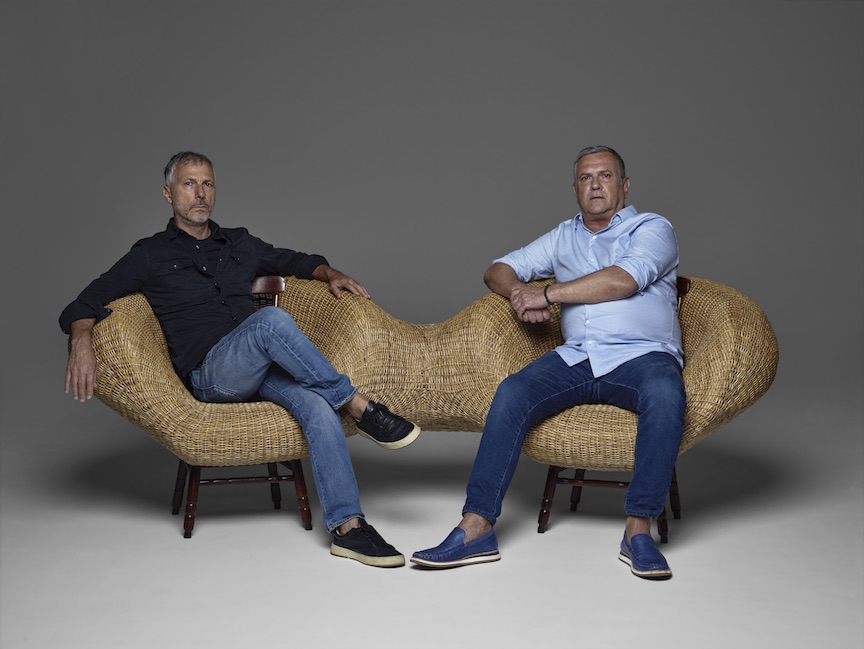
Humberto and Fernando Campana. Photo by Bob Wolfenson
“Through experimentation and our life experiences, we allow the creative chaos to take over and, eventually, we discover combinations of colors and materials”
Pioneers of disruptive design, the art of Fernando and Humberto Campana is strongly rooted in Brazilian culture and traditions, and carries universal values in its core, such as freedom and human dignity, by searching self-identity through life experiences. By incorporating the idea of transformation and reinvention, their creative process raises everyday materials to nobility, bringing not only creativity into design, but also Brazilian characteristics — the colors, the mixtures, the creative chaos — the triumph of simple solutions, in an artistic and poetic way, including the piece “Kaiman Jacare” that is part of Mint’s permanent collection and in the latest exhibition New Days, New Works.
Based in Sao Paulo, Estudio Campana is constantly investigating new possibilities within design: from furniture making to architecture, landscaping, fashion, scenography and more, and are represented throughout the world. Below the brothers share about how they work together, their creative processes and inspirations, and hope for the future.
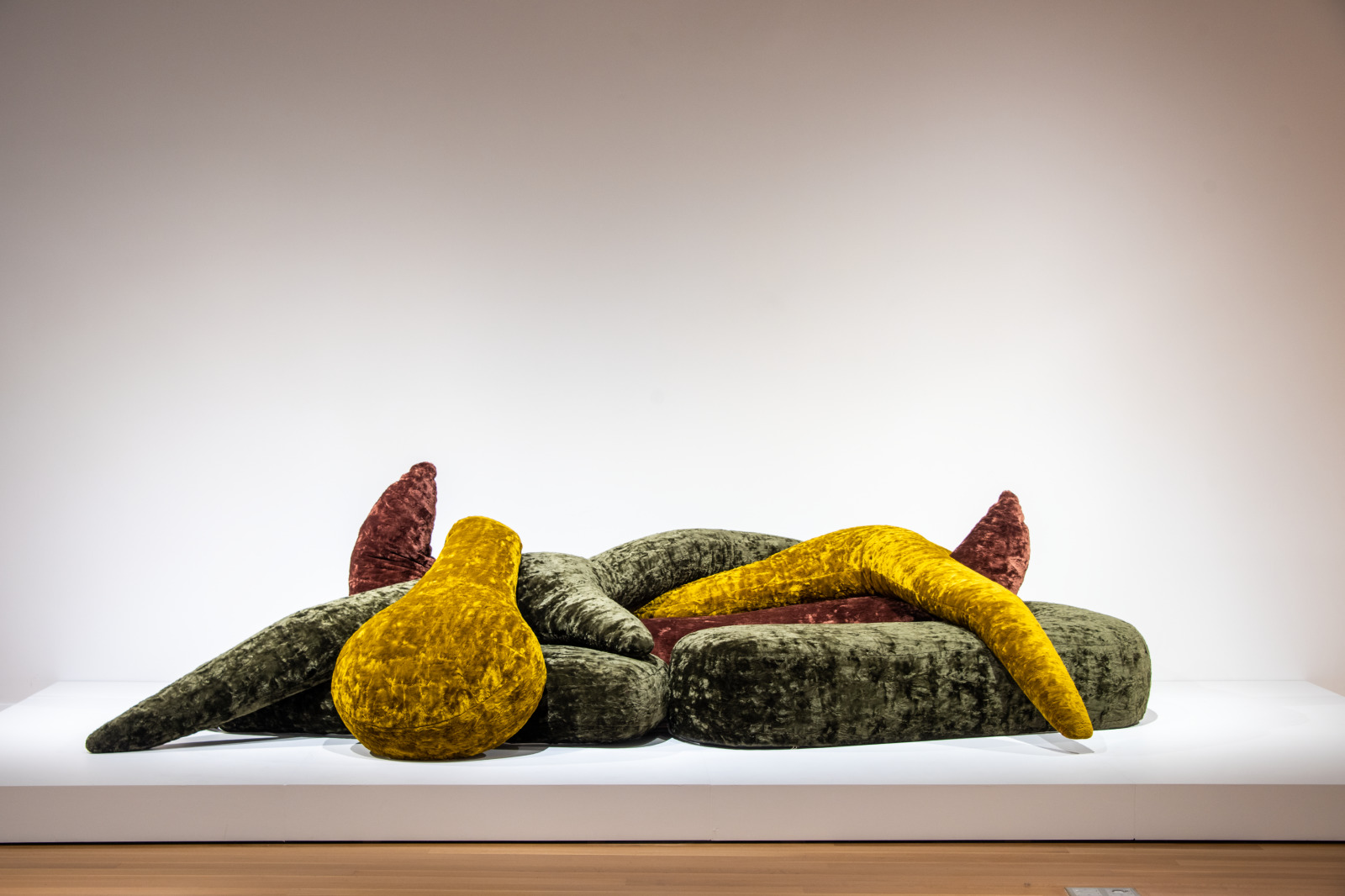
Fernando Campana (Brazilian, 1961–). Humberto Campana (Brazilian, 1953–). Kaiman Jacaré Sofa, velvet, polyurethane. Gift of the Tony Podesta Collection. 2014.75.12
Tell me a bit about yourselves and the type of art you specialize in.
We are storytellers, we like to bridge disciplines and try not to define ourselves by a particular type of art. Our mantra is to let materials “speak” to us, from which point we discover what shape and function it can take. Through experimentation and our life experiences, we allow the creative chaos to take over and, eventually, we discover combinations of colors and materials (many times overlooked by most designers) that tell the stories from that experience, artistically and poetically.
Where is your studio located?
Our studio is located in São Paulo, Brazil, in a neighborhood called Santa Cecília. Today it is considered a cool place, thriving with hype galleries, bars, shops and restaurants, right next to mom-and-pop shops, discount clothes stores, little hardware stores. When we started our practice there, back in the 1990s, it was considered a “no-go” zone due to the humble buildings and working-class population, but that’s exactly why we were attracted to it, for it was genuine and grassroots.
What’s it like working together from creation to execution of your artwork?
Humberto: Fernando and I complement each other very well. He starts from a bi-dimensional concept, making drawings, and often I bring that idea to life by researching materials, establishing a process, until it takes shape and comes into existence. I am interested in this process, and what happens behind the scenes, the role of the piece as it occupies a place in people’s homes. Fernando offers a distant gaze to my ideas, bringing a fresh outlook.
Fernando: It’s fair to say we have almost like a twin connection, certainly a spiritual one, although our thought process is different. When we are developing a new piece, there is an unspoken agreement between us, which is not always that smooth, but always with mutual respect. We also count with the support of our team at the studio, to help settle any standoffs.
What was your inspiration for Kaiman Jacare?
Our inspiration was the pre-historic animals, the dinosaurs. The idea was to create an oversized piece of furniture that resembles a tangle of giant scary creatures from that era. Each piece can be detached and reattached, allowing you to come up with several combinations. It’s a very comfortable, inviting, huggable composition, yet, it plays with the sense of being surrounded by these dangerous creatures, which we find quite provocative.
What is your favorite piece you’ve created?
Fernando: My favorite piece is still a very classic one, the Vermelha armchair, from 1998. We were fiddling around with different materials trying to come up with unusual upholstering when we picked up this roll of 500 meters of red rope and began to wrap it around a metal structure. It is our signature piece, produced by Italian manufacturer Edra, and part of several museums around the world.
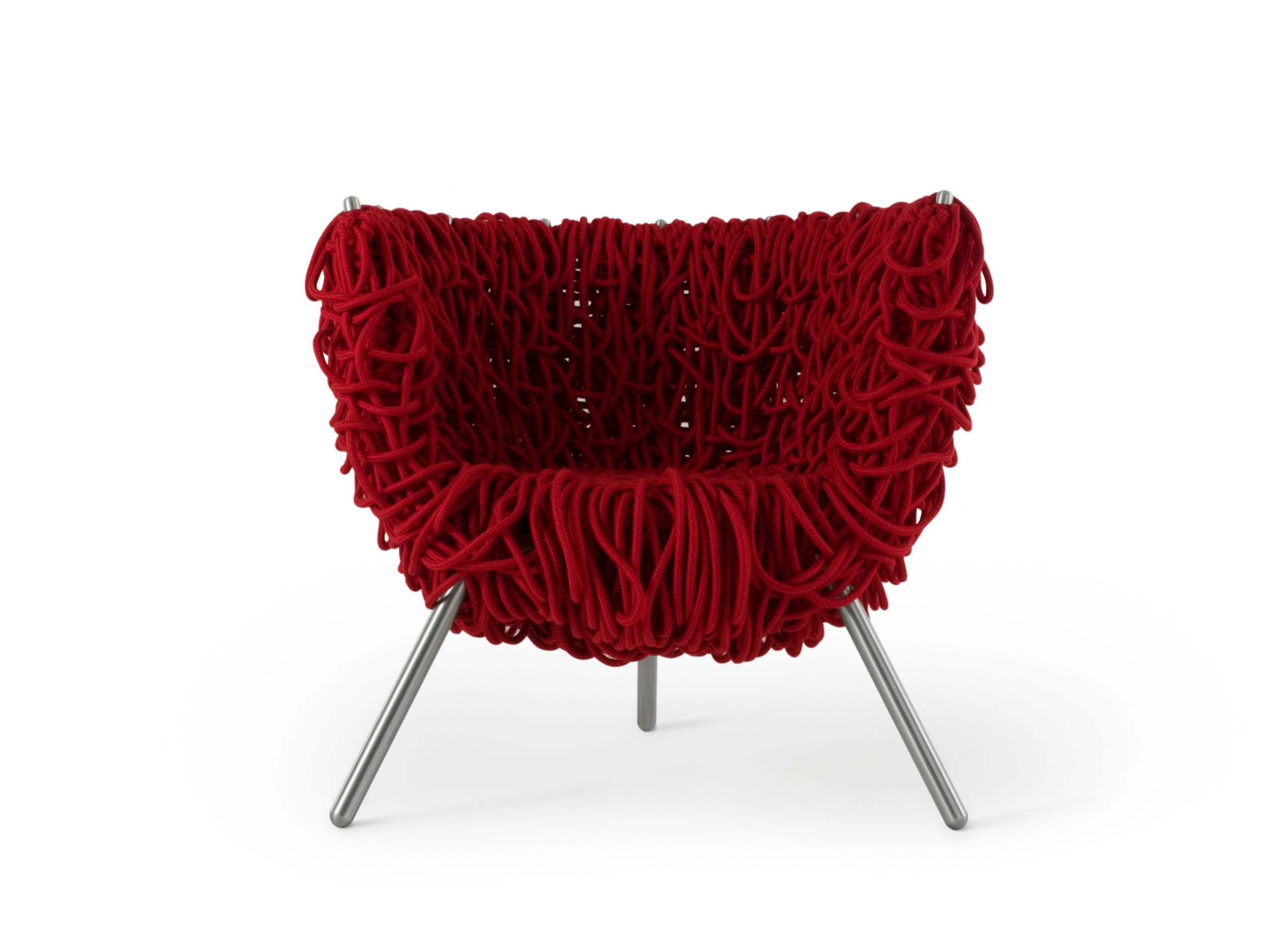
1998, Vermelha Armchair @ Edra.
Humberto: I am very fond of our Plush Toy collection (2002) because it has a deep connection with affection. It started as an experiment to find new ways of upholstering, and soon it transformed itself into this whimsical universe reminiscent of our childhood, the memory of a favorite stuffed toy, and the sense of protection and comfort.
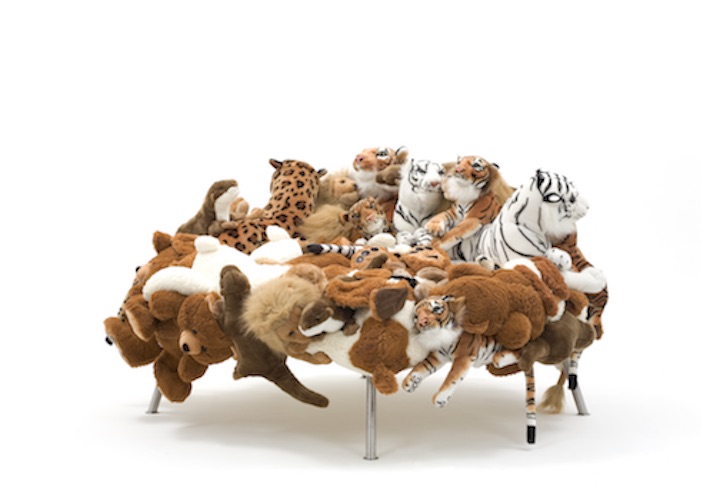
Cake Stool, Courtesy of Estudio Campana. Photo by Fernando Laszlo
How do people and your environment influence your art?
Fernando: These are an enormous influence for us, no doubt. We portray what we experience in our daily lives, especially in a country so culturally rich such as Brazil, with a unique viewpoint. Also, we grew up in the countryside, and nature was our main source of inspiration. Time had a different pace, giving us the chance to observe the landscape and animals in every season. That gave us the ability to pay attention to life as it unfolded. Once we moved to the city, we applied that same gaze towards people and their way of living, giving us a solid foundation for our design practice.
Humberto: Our work is like a snapshot of the world we experience. Places like the outskirts of São Paulo, Shanghai, the Amazon, the Sahara Desert, plus the people we encounter along the way. All of that fuels our imagination which is then materialized into objects.
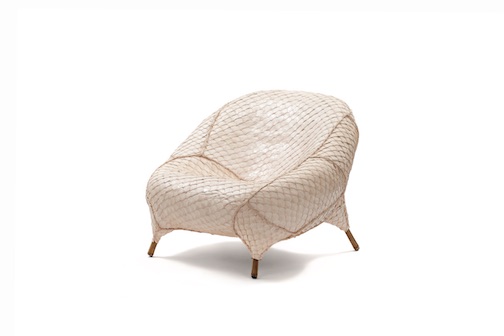
2016, Pirarucu Armchair Pink. Courtesy of Estudio Campana. Photo by Fernando Laszlo (4)
Are you finding new inspiration for your art during these current events in the world?
Fernando: It’s been pretty hard to find inspiration, but I had the chance to travel to the countryside and the seaside during the quarantine, keeping a distance from the industrial world and immersing myself in nature. This period will gradually percolate and eventually, something will come out of it, creatively speaking.
Humberto: At the beginning of the quarantine, I was quite upset like everyone else. Aside from the tragic loss of life, we also have terrible leadership in Brazil. After a while, I began to come to terms with the fact I had to stay at home, and suddenly my house became my universe. I discovered ways of creating with what I had at hand, in the space I had. Lately, I have been doing collages and assemblages, and it has helped me a great deal to stay creatively active.
What positive-perspective changes in society would you like to see evolve from the protests, pandemic and social struggles of now?
Fernando: I would like humanity to be more respectful of the environment. And a more fraternal society, where we look out for each other. We had enough destruction, deforestation and pollution on this planet. It’s time we take responsibility for our actions and stop producing waste that keeps corroding our home.
Humberto: I think the world today is too divided. This antagonism doesn’t take us anywhere, it only leads to destruction with no clear way out. I wish people would become more united, have more respect and affection for each other, leaving their ego aside, so that we can find and follow a path to coexistence.
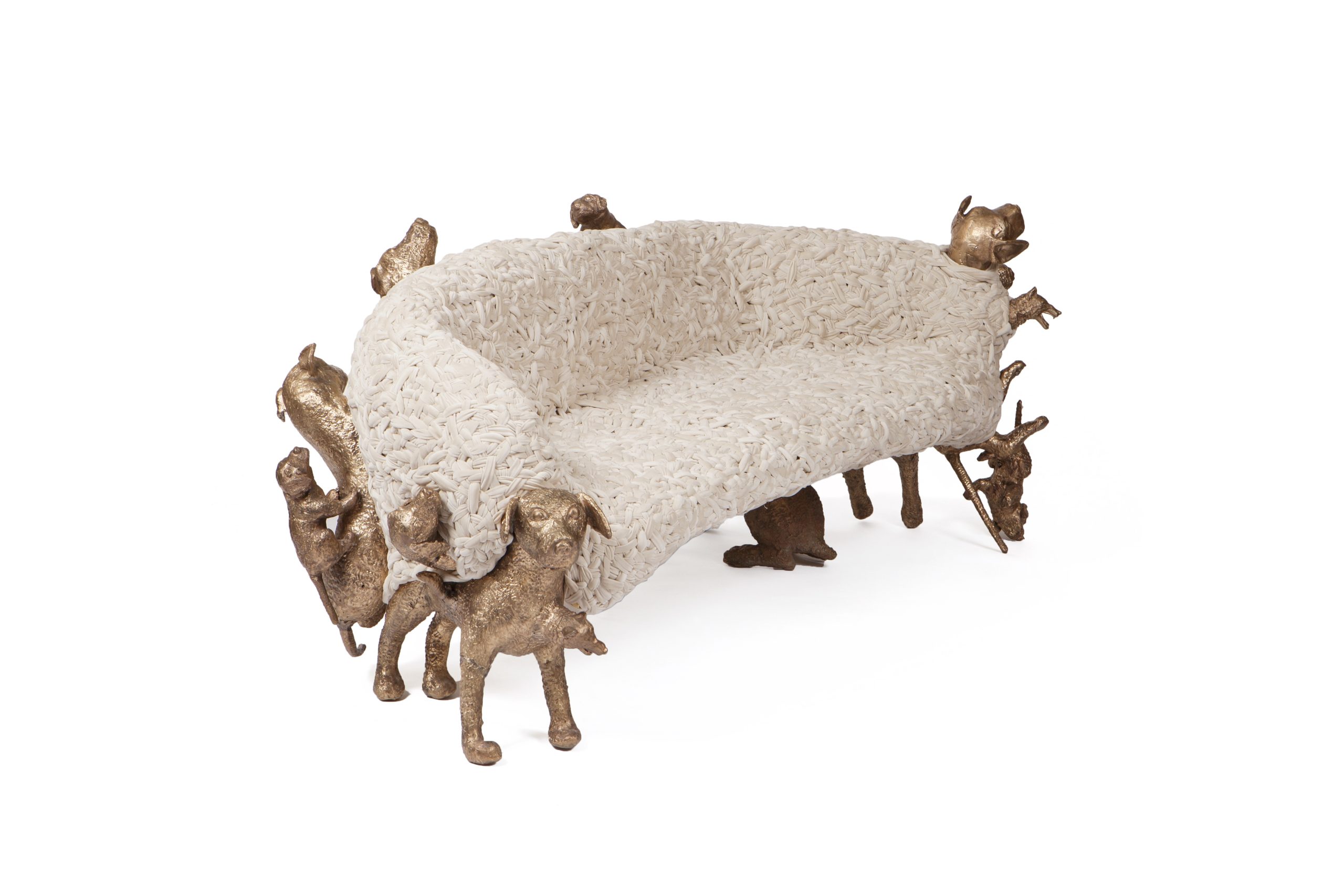
2018, Noah bench 2. Courtesy of Estudio Campana. Photo by Fernando Laszlo (13)
What are you reading, watching, and listening to these days?
Fernando: I just finished reading Les Misérables by Victor Hugo. I am also watching a few series on TV. One is called Girls from Ipanema which takes place in the ’60s, in Rio, during the Bossa-Nova years. I like to listen to all kinds of music, but Brazilian Popular Music (MPB) is always on top of my list.
Humberto: I have been reading articles about iconic designers and architects in English. I enjoy learning more about their life trajectories while reading them aloud and practicing the language.
Who are you following on social media right now?
Fernando: I am a bit of an outcast when it comes to social media. I don’t have any accounts on any platform. I am not attracted to this type of thing. I am much more interested in the real world.
Humberto: I am currently following Design Academy Eindhoven on Instagram (@designacademyeindhoven), from The Netherlands. I admire not only their outstanding conceptual design program, but also their intrinsic concern with training students to produce work in favor of a better planet.